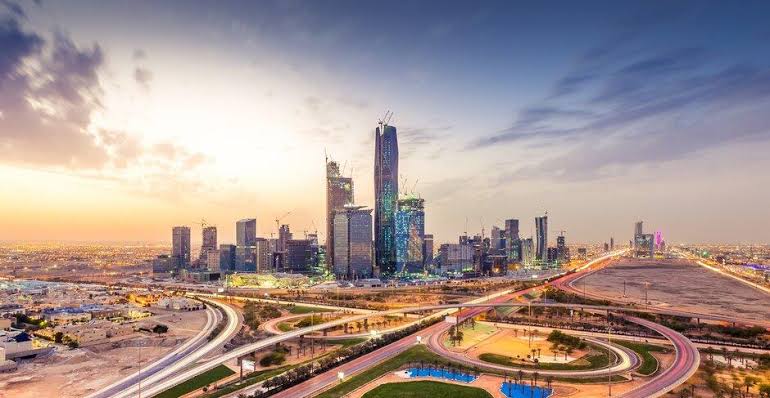Tourism is no longer just an economic sector—it is a global language of soft power, cultural identity, and economic diversification. For Saudi Arabia, the road to becoming one of the world’s top travel destinations passes through the visionary corridors of the Public Investment Fund (PIF). With billions of dollars earmarked for strategic tourism projects, the Kingdom is reimagining what it means to be a global destination—rooted in heritage, engineered for luxury, and designed for sustainability.
At the heart of this transformation lies PIF’s investment strategy: deliberate, bold, and entirely future-facing. Under the ambitious umbrella of Vision 2030 and the stewardship of Crown Prince Mohammed bin Salman, PIF is not simply building hotels or resorts—it is crafting entire ecosystems of experience that blend culture, nature, luxury, and modernity into a seamless visitor journey.
Redefining the Map: Tourism as a Strategic Pillar of Vision 2030
Vision 2030 identifies tourism as a key pillar in Saudi Arabia’s economic diversification strategy, aiming to attract 100 million visitors annually by 2030 and increase tourism’s contribution to GDP from 3% to 10%. This is not a peripheral goal—it is a central one. And no institution is better positioned to deliver on this ambition than PIF.
By owning, funding, and partnering with a wide range of tourism-focused entities, PIF is giving birth to world-class destinations that promise to rival the French Riviera, the Maldives, or the Swiss Alps—not by imitation, but through bold originality rooted in Saudi culture and untouched natural landscapes.
Red Sea Global: The Crown Jewel of Eco-Tourism
Among PIF’s most iconic tourism investments is Red Sea Global (RSG). Encompassing over 90 pristine islands, mountains, volcanoes, and desert dunes along the west coast of Saudi Arabia, this project is the world’s most ambitious luxury and eco-tourism development.
Red Sea Global is more than just a resort—it’s an entire archipelago of sustainability. Powered by 100% renewable energy, with plans for zero-carbon operations and intelligent waste recycling systems, it represents the future of conscious luxury.
The destination will eventually feature:
- 50+ luxury resorts
- 8,000 hotel rooms
- 1,300 residential properties
- An international airport designed for net-zero emissions
And all of this is unfolding under the leadership and capital stewardship of PIF. The fund has allocated over $10 billion to this project, ensuring it becomes one of the world’s most sustainable luxury travel hubs.
AMAALA: The Ultra-Luxury Wellness Destination
Adjacent to the Red Sea project is AMAALA, another PIF-backed development focused on wellness, art, and elite experiences. Billed as a “Riviera of the Middle East,” AMAALA is designed for ultra-high-net-worth individuals seeking holistic retreats, curated art immersion, and transformative wellness.
With its own dedicated airport and set within the Prince Mohammed bin Salman Natural Reserve, AMAALA aims to attract the world’s most discerning travelers through its:
- 29 luxury hotels
- 3,000 hotel rooms
- Marinas, spas, and fine dining spots
- Immersive cultural programming and health retreats
Here again, PIF is not just financing infrastructure—it is shaping identity. AMAALA is a message to the world: that Saudi Arabia is not just open for tourism, but is ready to lead it.
Boutique Group: Reviving Heritage Through Hospitality
Another innovative tourism subsidiary of PIF is the Boutique Group, a company created to transform historic Saudi palaces into ultra-luxury hotels. These palaces—previously inaccessible to the public—are now being converted into cultural treasures that blend hospitality with heritage.
This move serves multiple objectives:
- It revitalizes underused royal assets.
- It deepens cultural tourism offerings.
- It positions Saudi Arabia as a destination of narrative-rich, historically immersive experiences.
Boutique Group is restoring places like Al Hamra Palace in Jeddah and Tuwaiq Palace in Riyadh, promising visitors a royal treatment fused with authenticity and elegance.
The Rise of Cultural Districts and Urban Tourism
PIF’s tourism vision isn’t limited to coastlines and nature reserves. The fund is actively shaping Saudi Arabia’s urban tourism narrative through investments in Diriyah Gate, AlUla, and downtown Jeddah revitalization.
Diriyah, the birthplace of the Saudi state and a UNESCO World Heritage Site, is being transformed into a cultural capital that will include:
- Luxury hotels
- Museums
- Art centers
- Outdoor promenades
- Traditional souks
All of this will be developed in the context of Najdi architectural aesthetics and historical preservation, creating a destination where modern tourism and deep heritage meet seamlessly.
Similarly, the revival of historic Jeddah is being powered through real estate investments that fuse Ottoman-era buildings with modern hospitality. The goal: turn Saudi Arabia’s cities into global hubs of experience—not just business.
Local Experience Providers and Talent Development
PIF is not only funding mega-projects but also laying the foundation for local experience providers—from desert safari startups to tour guides trained in multiple languages. Through entities like the Tourism Development Fund (TDF), PIF ensures that SMEs and entrepreneurs in the hospitality space are empowered to innovate and grow.
This bottom-up approach ensures that the tourism sector doesn’t just look good on paper, but generates real, sustainable livelihoods for Saudis across the Kingdom.
Strategic Partnerships with Global Brands
To lend its projects international credibility and global pull, PIF is working closely with:
- Marriott International
- Accor Hotels
- Four Seasons
- Hyatt Group
- Six Senses
These partnerships ensure that each resort or hotel meets and exceeds global expectations in terms of design, service, and sustainability.
Moreover, the presence of these international brands makes the Kingdom’s new destinations attractive not only for travelers but also for foreign investors, travel influencers, and the international press.
In Conclusion: Building Tourism as a National Identity
What PIF is constructing is not merely a collection of resorts or a new stream of non-oil revenue—it is an entirely new national identity. Tourism is being used to reintroduce Saudi Arabia to the world, through beaches, deserts, museums, and mountains rather than oil fields and business forums.
Each hotel that opens, each UNESCO site that gets restored, each luxury yacht that docks on the Red Sea is a part of the Kingdom’s broader mission: to position itself as a modern, welcoming, and unforgettable destination.
The benefits are cascading:
- Economic diversification through new industries and job creation
- Cultural diplomacy through globally appealing narratives
- Environmental leadership through sustainable tourism infrastructure
- Youth empowerment through education, training, and employment in hospitality sectors
By 2030, the Kingdom aims to host over 100 million tourists, and based on the speed, scale, and precision of PIF’s investments, that target looks not only achievable—it looks inevitable.
Saudi Arabia is not waiting for the world to visit—it is actively inviting it with open arms, open landscapes, and open futures.











